Apache Kafka in a Smart City Architecture
Event streaming with Apache Kafka fits into smart city architecture for data integration and correlation in real-time, at scale, between stakeholders.
Join the DZone community and get the full member experience.
Join For FreeA smart city is an urban area that uses different types of electronic Internet of Things (IoT) sensors to collect and use data. That data then provides insights on how to efficiently manage assets, resources, and services. This blog post explores how Apache Kafka fits into the smart city architecture, its benefits, and use cases.
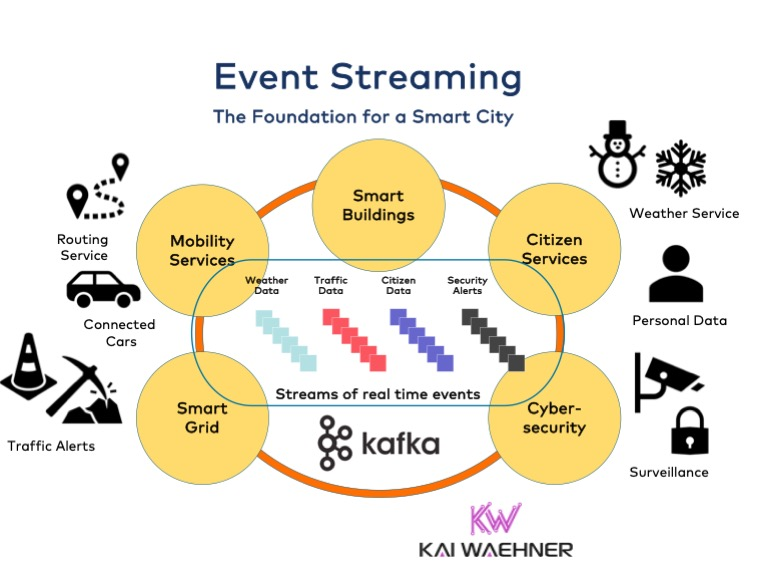
What Is a Smart City?
That's a good question. There is a sophisticated definition:
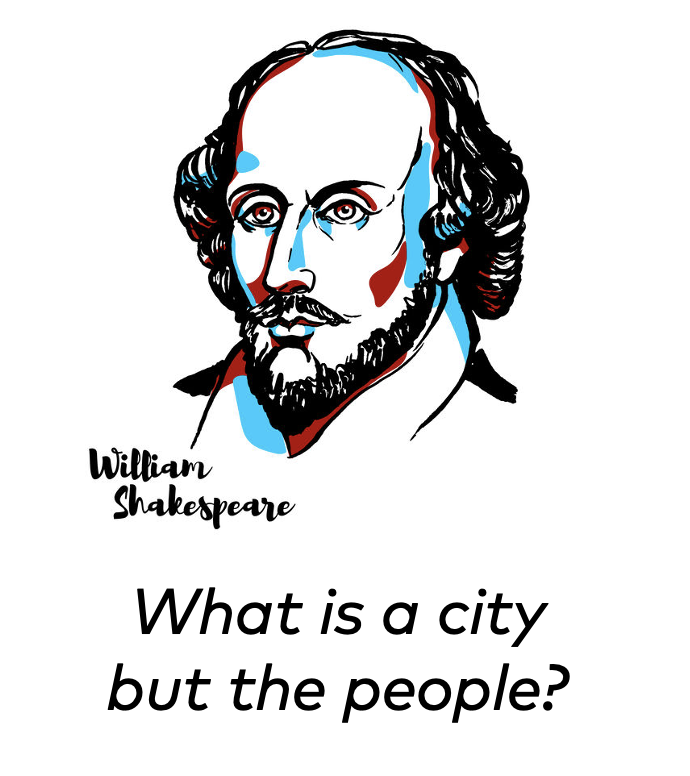
Poetic, right? Don't worry, there is a more relevant definition for a smart city. The following is a great summary from Jonathan Reichental's book, Smart Cities for Dummies:
“A smart city is an approach to urbanization that uses innovative technologies to enhance community services and economic opportunities, improves city infrastructure, reduce costs and resource consumption, and increases civic engagement.”
A smart city provides many benefits for civilization and city management:
- Improved pedestrian and vehicle safety
- Proactively engaged first responders
- Reduced traffic congestion
- Connected and autonomous vehicles
- Enhanced customer experiences
- Automated business processes
The research company IoT Analytics describes the top use cases of 2020:
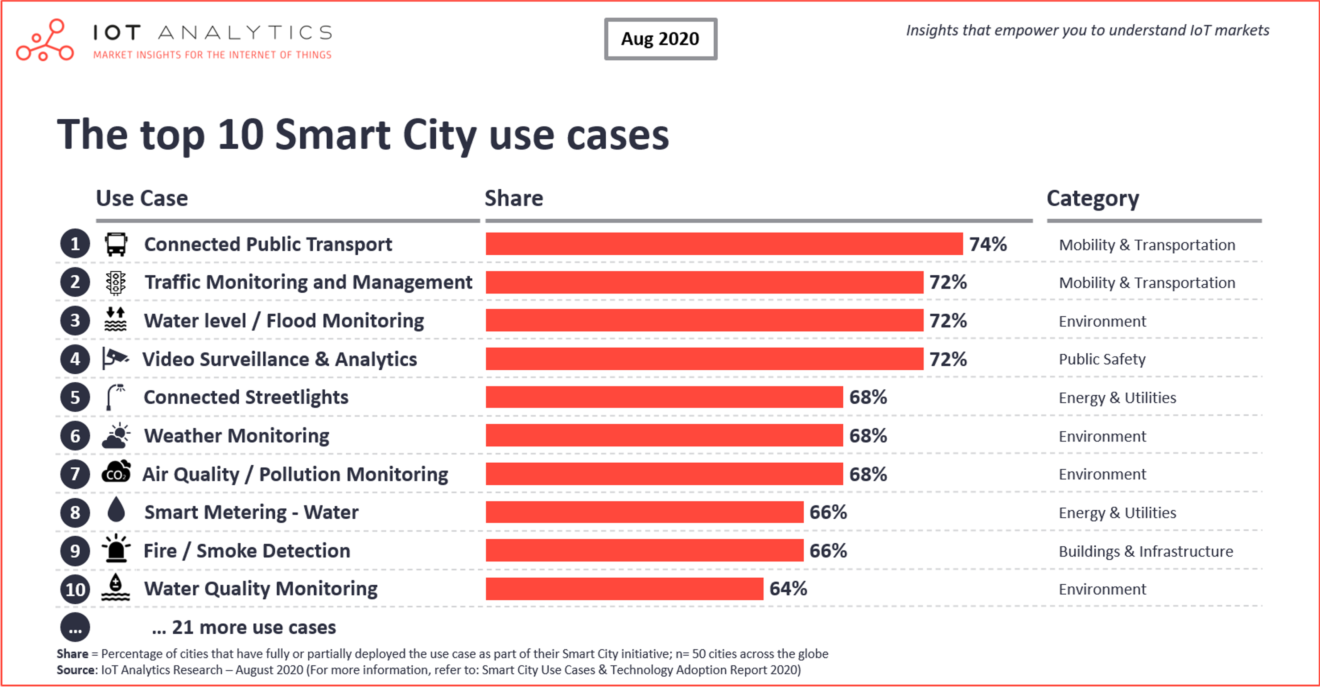
These use cases indicate a significant detail about smart cities – the need for collaboration between various stakeholders.
Collaboration Is Key for Success in a Smart City
Smart city initiatives typically involve the products and mobile applications of these cities, vendors, and operators:
- Public sector agents (government and cities) – laws, regulations, initiatives, and budgets
- Hardware makers and suppliers – smart cars, drones, traffic lights
- Telecom providers – stable networks with high bandwidth and low latency (5G, Wifi hotspots)
- Mobility services – ride-hailing, car-sharing, map routing
- Cloud providers – cloud-native infrastructure for backend applications and services
- Software providers – SaaS, edge, and mobile applications for CRM, analytics, payment, location-based services, and more
Different stakeholders often compete. For instance, cities want to build their own mobility services because they are the main gate to end-users.
Funding is another issue. IoT Analytics states that cities "typically rely either on public or private funding for realizing their smart city projects. To overcome funding-related limitations, successful smart cities tend to encourage and facilitate collaboration between the public and private sectors (i.e., Public-Private-Partnerships (PPPs)) in the development and implementation of smart city projects."
Digital Infrastructure as Prerequisite for a Smart City
A smart city cannot exist without digital infrastructure and its various components:

Event Streaming as a Foundation for a Smart City
A smart city functions alongside various interfaces, data structures, and technologies. Many high-volume data streams must be integrated, correlated, and processed in real-time. Scalability and elastic infrastructure are essential for success. Many data streams contain mission-critical workloads and must offer reliability, zero data loss, and persistence.
An event streaming platform based on the Apache Kafka ecosystem provides all these capabilities.
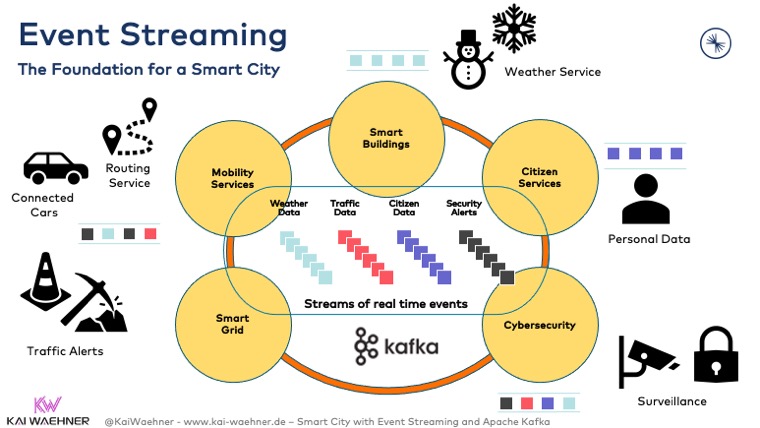
smart city use cases often include hybrid architectures. Some parts have to run at the edge – closer to streets, buildings, cameras, and many other interfaces for high availability, low latency, and reduced costs. Check out the "Use Cases and Architectures for Kafka at the Edge" for more details.
Public Sector Use Cases for Event Streaming
Smart cities and public sector operations are usually considered together. Here are several use cases that find significant improvement by leveraging event streaming:
- Citizen services
- Health services – hospital modernization, track and trace distance control
- Efficient and digital citizen engagement – the personal ID application process
- Open exchanges – mobility services, working with partners such as carmakers
- Smart cities
- Smart driving, parking, buildings, environment
- Waste management
- Mobility services
- Energy and Utilities
- Smart grid and utility infrastructure
- Energy distribution, smart home, smart meters, smart water
- Security
- Law enforcement and surveillance
- Defense and military
- Cybersecurity
This is just a small sample of possible scenarios that benefit from event streaming. Many use cases from other industries can also be applied to the public sector and smart cities. Check out "Use Cases and Architectures for Apache Kafka Across Industries" to learn about real-world deployments from Audi, BMW, Disney, Generali, Paypal, Tesla, Unity, Walmart, William Hill, and more.
NAV — Life Is a Stream of Events
The Norwegian Work and Welfare Department (NAV) serve as a great example of a public sector agent that has implemented the life of its citizens as a stream of events.
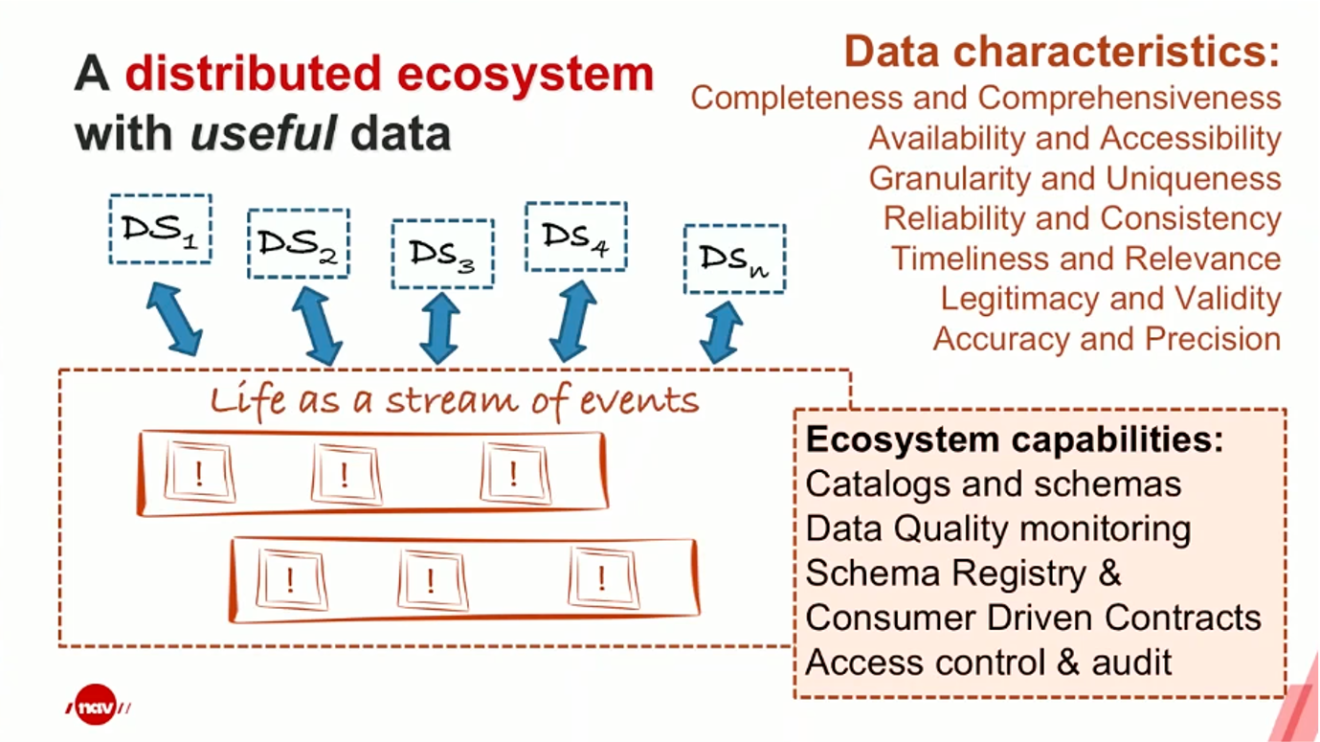
This results in citizens having a digital twin, which enables various use cases for real-time and batch processing of citizen data. For instance, new ID applications can be processed and monitored in real-time while anonymized citizen data allows the aggregation of improving city services, such as by being able to hire the correct number of people for each department.
Obviously, such a use case is only possible with security and data governance in mind. Authentication, authorization, encryption, role-based access control, audit logs, data lineage, and other concepts need to be applied end-to-end using the event streaming platform.
The Smarter City Nervous System
A smart city requires more than real-time data integration and real-time messaging. Many use cases are only possible if the data is also processed continuously in real-time. That's where Kafka-native stream processing frameworks such as Kafka Streams and ksqlDB come into play. Here is an example of how receiving images or videos from surveillance cameras can enable monitoring and alerts in real-time, at scale:
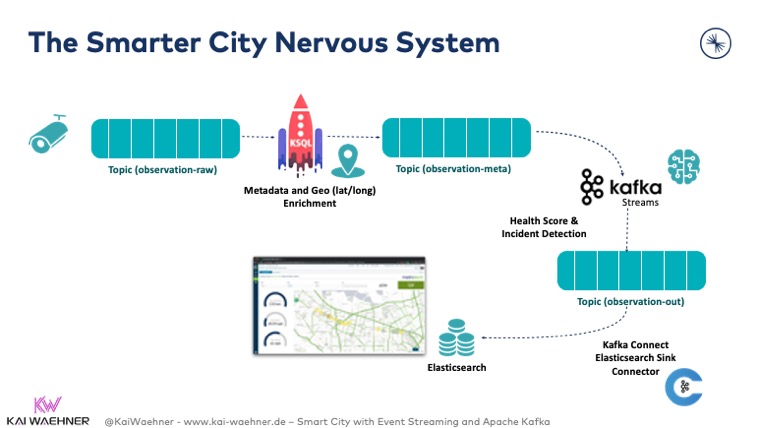
Check out "Smart city With an Event Streaming Platform Like Apache Kafka" for more details about data integration and stream processing within the Kafka ecosystem.
Scalable, Real-Time Smart City Infrastructure
The public sector and smart city architectures leverage event streaming for various use cases. The reasons are the same as in all other industries: Kafka provides an open, scalable, elastic infrastructure. Additionally, it is battle-tested and runs in every infrastructure (edge, data center, cloud, bare metal, containers, Kubernetes, fully-managed SaaS such as Confluent Cloud).
But event streaming is not the silver bullet for every problem. Therefore, Kafka complements other technologies such as MQTT for edge integration, or a cloud data lake for batch analytics.
What are your experiences and plans for event streaming in smart city use cases? Have you already built applications with Apache Kafka? Let’s connect on LinkedIn and discuss! Stay informed about new blog posts by subscribing to my newsletter.
Published at DZone with permission of Kai Wähner, DZone MVB. See the original article here.
Opinions expressed by DZone contributors are their own.

Comments